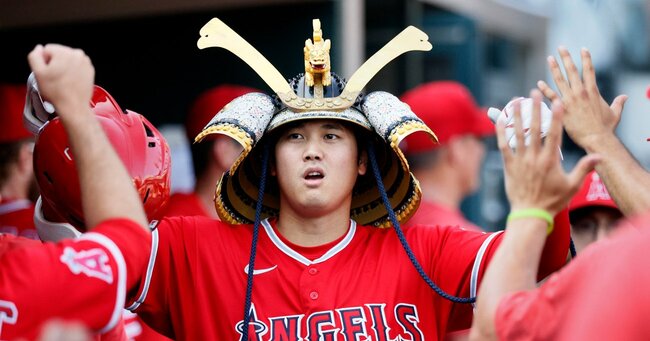
Bench placement plays a vital role in baseball games.
The home and visiting team benches are located in different positions and each bench has its own advantages.
This arrangement can affect game strategies and player performance, so understanding which bench has the advantage is very important for baseball fans and players.
In this article, we will take a detailed look at the basic layout and differences in the roles of benches, the advantages of each type of bench, historical changes in their layout, and some interesting anecdotes about benches.
目次
- 1 What is the basic layout of a baseball bench?
- 2 Differences in the roles of the home bench and the visitor bench
- 3 What are the benefits of home benching and why?
- 4 What are the benefits of visitor benches and why?
- 5 How bench placement impacts the game
- 6 Historical bench layout and its changes
- 7 A funny story about bench placement
What is the basic layout of a baseball bench?
In baseball games, bench placement plays an important role in game management and strategy.
There are basic rules for bench arrangement, and the home and visitor benches each have specific positions and roles.
Here we will explain in detail the basic layout of baseball benches and the differences between home and visitor benches.
Difference between home bench and visitor bench
Bench placement
The benches at a baseball game are usually located on both sides of the stadium.
The home team’s bench is located either on the first or third base side, depending on the stadium.
The visiting team’s bench is placed opposite the home team’s bench.
This arrangement makes it easier for managers and coaches from both teams to keep an eye on the game and give instructions to players.
Home Bench Features
The Home Bench has the following features:
-
Fully equipped facilities :
- The home bench is usually designed by the stadium designer and operator to provide the most comfortable environment, for example equipped with air conditioning, heaters, relaxation spaces, etc., to provide an environment where players can relax.
-
Distance from the audience :
- The home bench is often located near the home team’s fans, allowing the players to receive direct support from the crowd, which helps boost morale.
-
Use of facilities :
- The home team’s bench has easy access to the stadium’s various facilities (training rooms, medical facilities, etc.), which is useful for emergency response during the game and for player conditioning.
Visitor Bench Features
The visitor’s bench also has its own unique features:
-
Environmental differences :
- The visitor’s bench is often inferior to the home bench in terms of facilities. This is part of providing an advantageous environment for the home team, while the visiting team must adapt to the away environment.
-
Spectator Influence :
- The visitor’s bench is usually located on the side where there are fewer home team fans, which means that it is harder for your support to be heard, and in some cases you may feel pressure from the opposing team’s fans.
-
Stadium adaptation :
- Visiting team players are not used to the facilities and environment of the stadium and so they need to adapt, especially during consecutive games or long road trips.
Impact on the match
Bench configuration can have a direct impact on game strategy and player performance.
For example, players on the home bench can use their experience in their own stadium to make quick tactical changes and substitutions during a match.
In addition, receiving direct support from the spectators helps to boost the players’ morale.
On the other hand, visiting team players have to adapt to the away environment, which can affect the flow of the game.
It is important for the visiting team to understand the characteristics of the stadium before the match and make appropriate preparations.
The placement of a baseball bench is a factor that has a significant impact on game management and player performance.
Understanding the differences between the home bench and the visitor’s bench will give you a clearer picture of the game’s strategies and the players’ movements.
Having this perspective will allow you to enjoy the game of baseball on a deeper level.

Differences in the roles of the home bench and the visitor bench
In a baseball game, the home bench and the visitor’s bench each have different roles and characteristics.
These differences have a direct impact on match strategies and player performance.
Here we will explain in detail the roles of the managers and players on each bench.
The roles of the coach and players on each bench
The role of the home bench
The home bench has some advantages and specific roles as it is used by the home team.
Its main features are:
-
Center of instruction and strategy :
- The manager takes overall command from the home bench, making quick changes to the game and tactics. The home bench is usually equipped with the latest data analysis tools and communication devices, allowing for real-time data analysis and strategy planning.
-
Player Care and Management :
- Trainers and medical staff are always on hand to manage the health of players and administer first aid to injuries. The home bench is equipped with ice and stretching equipment, providing the perfect environment for player conditioning.
-
Psychological advantage :
- The home bench is located in a position where the fans’ cheers can reach them directly, which has the effect of boosting the players’ morale. The cheers of the fans are an important factor in motivating the players.
-
Fully equipped facilities :
- The home bench is equipped with air conditioning, heaters, and relaxation spaces to ensure that players can feel comfortable during the match, allowing them to relax and concentrate on the game.
The role of the visitor’s bench
The visitor bench is used by visiting teams playing in an away environment.
Compared to the home bench, it has the following features and functions:
-
Strategic flexibility :
- Visiting managers need to be flexible with their strategies given the limited resources available to them, and away games require them to be creative in adapting to the home conditions of the opposing team.
-
Player Adaptability :
- Visiting players have to deal with the pressure from the home fans and unfamiliar surroundings, and their ability to adapt can have a major impact on the outcome of the match.
-
Communication tips :
- Visitor benches require creative communication methods, for example special signs and gestures may be used to convey instructions effectively in a noisy environment.
-
Manage resources :
- The visitor’s bench is often not as well equipped as the home bench, so it is necessary to make the most of the limited resources available. Managing the physical condition and conditioning of the players is also an important issue.
Impact on the match
The difference between the home and visitor benches has a direct impact on the game strategy and the players’ performance.
By making the most of the home bench advantage, the home team can gain an advantage in the game.
On the other hand, the visiting team will be required to adapt to the away environment and develop flexible strategies to gain an advantage in the match.
Understanding the bench layout and its role will give you a clearer picture of the game strategy and player movements.
Being aware of the differences between the home bench and the visitor’s bench will allow you to enjoy the baseball game even more.

What are the benefits of home benching and why?
There are many reasons why the home team has an advantage in baseball games.
The placement, facilities and environment of the home bench have a big impact on the outcome of the game, and there are many elements that help players perform at their best.
Here we take a closer look at the benefits of a home bench and why.
Why the home team has an advantage
Fully equipped facilities
The home bench is fully equipped to ensure the comfort of players and staff.
The stadium is equipped with climate control equipment such as air conditioners and heaters, as well as relaxation spaces and massage chairs, allowing players to relax before and during games.
This reduces fatigue and improves the player’s concentration.
Habituation
Since home team players play in the stadium they normally use, they are familiar with the field condition, wind direction, lighting arrangement, and other environmental factors.
Getting used to this environment will help improve your playing accuracy and reduce mistakes.
In addition, home team players will have free access to their own locker rooms and training facilities, allowing them to smoothly prepare for the match.
Fan support
The home benches are located closer to the home team’s fans so that the players can receive direct support from the crowd.
Cheering and chants are an important factor in boosting players’ morale and improving their performance.
Especially in close games or when the team is facing adversity, the support of fans can motivate the players and turn the tide of the game in their favor.
Easy communication
The home bench is equipped with facilities to enable smooth communication between the manager, coaches, and players.
Intercoms and walkie-talkies are installed so that instructions and strategy changes can be made quickly during the match.
In addition, the home bench is often positioned so that the manager has a good view of the entire field, allowing him to make substitutions and tactical changes at the right time.
Convenience of emergency response
The home bench is equipped with ample medical facilities and a space for trainers, allowing us to respond quickly to injuries or illnesses that occur during the match.
Icing equipment and first aid kits are always available to help keep players in top condition during matches.
In addition, coordination with the medical staff in the stadium is smooth, ensuring thorough health management of the players.
Strategic flexibility
Managers and coaches on the home bench can easily access a variety of data and information from within the stadium, allowing them to analyze data and develop strategies in real time.
This allows you to make flexible tactical changes according to the flow of the game, giving you an advantage in the match.
The advantages of a home bench include player comfort and familiarity with the environment, fan support, quick communication, ease of emergency response, and strategic flexibility.
The combination of these factors gives the home team an advantage in the match and increases their chances of winning.
Making the most of the home bench advantage will directly impact your team’s success.

What are the benefits of visitor benches and why?
In baseball games, the visiting bench also has its own advantages.
When a visiting team plays in an away environment, there are a number of circumstances that can work to their advantage.
Here we take a closer look at the benefits of the visitor’s bench, why it is important, and the situations in which the visiting team has an advantage.
In what situations does the visiting team have an advantage?
Freedom from the pressure of being away
The visiting team can play under less pressure from the home team’s fans.
Especially if the home team is struggling, the pressure from the home fans can sometimes be a stress for the home team and a positive for the visiting team.
The visiting team is less likely to feel pressure from the outside and can play the game at their own pace.
Strategic Flexibility
Visiting teams need to have strategic flexibility to adapt to the away environment.
This flexibility develops your ability to react quickly to unexpected situations during a match.
For example, you’ll need to adjust your defensive position to suit the characteristics of different stadiums, and change your batting strategy to match the opposing team’s pitchers.
This flexibility gives you the ability to respond effectively to unexpected incidents or changes in the opposing team’s strategy.
Improving unity
The visiting team will be expected to come together in an away environment.
During away games, the bonds between players deepen and the sense of unity of the entire team often increases.
This unity is the driving force behind overcoming pressure and difficult situations during a match, and it boosts team morale.
Support between teammates plays an especially important role when playing consecutive games or on long trips.
A strong mentality in the face of adversity
Visiting team players can develop a mentality to face adversity in an away environment.
Away games require players to adapt to a different environment and the pressure from the home team’s fans, which helps to strengthen their mental strength.
The experience of overcoming adversity will have a huge impact on how you perform in key games late in the season and in the playoffs.
Home team overconfidence
One situation in which the visiting team has an advantage is when the home team is overconfident.
Home teams can become complacent and complacent by relying too much on their own field and the support of their fans.
By taking advantage of this gap, the visiting team can gain an advantage in the game.
By focusing on their away games and doing their best, the visiting team can achieve unexpected results.
Pre-match advantage
The visiting team may be given time before the match begins to make detailed analysis of the stadium’s characteristics and the opposition’s movements.
Through pre-match warm-ups and field checks, you can find out the opposing team’s weaknesses and use them in your match strategy.
This preparation is key to gaining an advantage early on in the match.
The visitor’s bench has its own advantages and situational strengths that come with being away.
Strategic flexibility, improved cohesion, a resilient mentality and exploiting the home team’s overconfidence can give visiting teams an advantage in away games.
Understanding the characteristics of the visiting bench and maximizing its benefits is key to the visiting team’s success.

How bench placement impacts the game
In a baseball game, bench placement is one of the factors that greatly influences strategy and player performance.
The position and arrangement of the bench directly affects the execution of instructions and tactics during the game, as well as the players’ concentration and morale.
Here we will take a closer look at the specific impact bench placement has on game strategy.
The impact of bench placement on match strategy
Visibility and communication of instructions
Bench placement affects a manager’s or coach’s ability to see the entire field.
For example, if the home bench is located on the first base side, the manager can clearly see the runners and defensive positions from first to third base.
This makes it easier to give instructions to players at the right time, enabling quick tactical changes.
It is also important that instructions from the bench are communicated quickly and reliably to the players on the field.
A properly positioned bench will make it easier for managers and coaches to give visual and audio instructions to players, facilitating communication during the game.
This allows the whole team to move more smoothly and makes it easier to control the flow of the game.
Strategic Positioning and Psychological Advantage
The bench arrangement also impacts the psychological state of the players.
If the home bench is close to the stands, the players can receive direct support from the fans, which boosts morale.
The support of the crowd can improve players’ performance, especially in close games and at crucial moments.
On the other hand, the placement of the visitor’s bench requires some ingenuity to help the players maintain their concentration.
Visiting team players feel less pressure in an away environment and may actually be able to improve their concentration.
In this way, the bench arrangement also affects the psychological state of the players and can influence the flow of the game.
Timing of defense and attack
The placement of the bench also affects the timing of defense and offense.
For example, the home bench located on the third base side can smoothly communicate with the third base coach, allowing them to accurately adjust instructions to the runner and the timing of throws.
This improves attacking mobility and increases scoring opportunities.
Bench placement is also important defensively.
By quickly adjusting defensive positions and giving instructions to shift, you can effectively defend against attacks from the opposing team.
Proper defensive timing and positioning are key to turning the tide of a game in your favor.
Emergency response and player condition
The placement of the bench also affects emergency response and management of player condition.
By having medical staff and trainers located in a position where they can respond quickly, injuries and illnesses of players can be dealt with promptly.
This allows players to concentrate on playing with confidence and maximize their performance during the match.
The placement of the bench has a huge impact on game strategy, including ensuring visibility, communicating instructions, psychological advantage, timing of defense and offense, and emergency response.
The combination of these elements can give your team an advantage in the match and pave the way to victory.
Understanding the importance of bench positioning and developing the right strategy can help your team perform at its best.

Historical bench layout and its changes
Baseball bench arrangements have undergone many changes throughout history.
Bench placement is a factor that has a major impact on match management and player performance, and has evolved over the years.
Here we will take a closer look at the differences between bench arrangements in the past and present.
Past bench layout
Initial bench layout
When baseball was first created in the late 19th and early 20th centuries, the bench arrangement was very different from what it is today.
In early stadiums, the benches were simple wooden benches with few special amenities or comforts.
Players typically sat along the sidelines of the field to watch the game.
At that time, the positions of the benches were often not fixed like they are today, and their placement varied depending on the stadium.
Managers and coaches did not sit in a specific place like they do today, but rather typically walked around the field during the game and gave instructions.
Transition in the mid-20th century
In the mid-20th century, bench arrangements and facilities began to improve gradually.
In particular, Major League Baseball stadiums have introduced facilities that take players’ comfort into consideration, and roofs are now installed over the benches.
This protects the players from rain and strong sunlight, creating an environment that allows them to maintain their condition during a match.
Also, during this period, the benches were fixed to the first base and third base sides, creating a clear distinction between the home team and visiting team benches.
This allows for smoother communication of instructions and tactics during matches.
Current bench layout
Modern stadium bench arrangement
In modern baseball stadiums, bench layouts and facilities have evolved to maximize the comfort and efficiency of players and staff.
The current bench layout features:
-
Fixed position :
- Currently, the benches are fixed on the first or third base side, and the home and away team benches are clearly separated, allowing for efficient communication of instructions and tactics during the game.
-
Fully equipped facilities :
- Modern benches are equipped with air conditioners, heaters, relaxation spaces, massage chairs, etc., so that players can relax before and during the game. There is also space for trainers and ample medical equipment, so the health of players is thoroughly managed.
-
Improved communication :
- The bench is equipped with facilities to facilitate smooth communication between the manager, coaches, and players. Intercoms and walkie-talkies are installed, allowing for real-time data analysis and instruction transmission. This allows for swift tactical changes and player substitutions during a match.
-
Player conditioning :
- Modern benches are equipped with ice treatment equipment and stretching spaces to help players stay in top condition during games, helping them perform at their best.
Bench placement effects
Bench placement directly impacts game strategy and player performance.
Proper layout and facilities allow players to relax and concentrate on the match.
In addition, managers and coaches can give instructions to players quickly and accurately, which allows them to control the flow of the game in their favor.
The bench arrangement has evolved over the history of baseball to reach its current form.
Understanding the differences between bench arrangements of the past and present can help inform how game management and player performance have improved.
Modern bench arrangements are designed to maximize player comfort and efficiency, and are a key factor in giving teams an advantage in the game.

A funny story about bench placement
There are many interesting stories surrounding bench arrangements in baseball games.
These episodes often become the driving force behind a dramatic change in the course of a match or leave a lasting impression on players and fans.
Here are some bench anecdotes from famous games.
“Jeter’s Jump Throw”: 1996 American League Championship Series
During the 1996 American League Championship Series (ALCS), New York Yankees pitcher Derek Jeter’s “jump throw” sent the Yankees bench into a frenzy.
In Game 4 of this series, Jeter made a spectacular play by diving from deep shortstop and making a jump throw to first base for the out.
This play was a huge morale boost for the bench and led to a come-from-behind victory for the Yankees.
Jeter’s jump throw, along with the cheers from the bench, has become a famous moment that is still talked about today.
“The Pitch”: 1998 National League Wild Card Game
In the 1998 National League Wild Card Game, Trevor Hoffman of the San Diego Padres sent the entire bench into a frenzy.
Hoffman came off the visitors’ bench at Coors Field to take the mound to close out the game.
His masterful pitching saw him strike out three consecutive batters and propel the Padres into the playoffs.
This dramatic moment drew joy and cheers from the players on the bench and left a lasting impression on the fans.
“The Comeback”: 2004 American League Championship Series
The Boston Red Sox’s historic comeback against the New York Yankees in the 2004 American League Championship Series (ALCS) is a classic example of bench positioning and its impact.
The Red Sox won the series after three straight losses and advanced to the World Series.
In this comeback, the unity and morale of the players on the bench changed the course of the game.
In particular, David Ortiz’s performance, bolstered by support and cheers from the bench, epitomized the Red Sox team spirit.
“The Bat Flip”: 2015 American League Division Series
During the 2015 American League Division Series (ALDS), Toronto Blue Jays’ Jose Bautista’s “bat flip” was a game-changing moment.
In Game 5 of this series, Bautista hit the winning three-run home run in the seventh inning and performed a spectacular bat flip.
The play excited the Blue Jays bench and boosted team morale greatly.
Bautista’s bat flip is still a famous moment talked about among baseball fans, and is a good example of the impact that bench positioning and cheering can have on the flow of the game.
“The Handshake”: 2001 World Series
The walk-off hit by Arizona Diamondbacks’ Luis Gonzalez in the 2001 World Series is an episode that epitomizes the joy of the bench.
In Game 7 of the series, Gonzalez hit a walk-off home run off Mariano Rivera of the New York Yankees to lead his team to the World Series championship.
At that moment, the entire Diamondbacks bench jumped up in unison, erupting in joy.
This episode clearly illustrates the impact that bench positioning and player unity can have on the outcome of a game.
Stories about bench arrangements are an important factor in coloring the dramatic moments of baseball games.
These stories have the power to leave a strong impression on players, coaches and fans, and to dramatically change the course of a game.
Understanding bench placement and its impact will help you enjoy the game of baseball even more.





